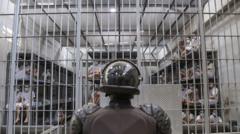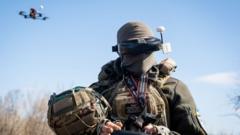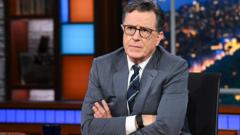As Russia's summer offensive intensifies, its forces leverage numerical superiority and strategic targets to gain ground in Ukraine. The effectiveness of military spending and support from the U.S. will play crucial roles in shaping the ongoing conflict.
Strategic Shifts: How Russia is Advancing in Ukraine

Strategic Shifts: How Russia is Advancing in Ukraine
An analysis of the factors contributing to Russia's territorial gains in Ukraine amid evolving military and economic dynamics.
In July 2025, the ongoing Russia-Ukraine war has shifted dynamics with Russia's renewed offensive making notable territorial gains. The country's military strategies, backed by a clear numerical advantage in both manpower and air power, have resulted in the largest monthly expansion of territory for Russia this year. Despite these advances, the conflict extends beyond the battlefield; analysts suggest that Moscow's motives involve not just territorial acquisition but a systematic dismantling of the Ukrainian military structure.
In recent weeks, Russian troops have ramped up attacks across various fronts, successfully expanding their control in key areas of Ukraine. Notably, they have established control over more than two-thirds of the Donetsk region, which serves as a focal point of the conflict. Russian military operations have created a strategically significant pocket around the city of Kostiantynivka, effectively encircling Ukrainian defensive positions. As a result, the Ukrainian forces face significant challenges in mounting effective resistance.
However, the sustainability of Russia’s military campaign is at risk due to economic constraints. The cumulative financial burden of military operations has begun to raise concerns regarding the long-term viability of continued hostilities. This economic backdrop also influences Ukraine’s defense efforts, particularly as the U.S. signals wavering support for arming Ukrainian forces. Recent statements from the Trump administration suggest a shift to a model where NATO allies may procure U.S. armaments for Ukraine, complicating the supply dynamics.
As the conflict evolves, the implications of military strategies and economic pressures continue to shape both nations' fates. The dual challenges of maintaining military momentum and securing robust financial resources could determine the outcomes of upcoming offensives. Both the ground and air war components illustrate a vivid picture of how the operational landscape in Ukraine could change in the near future.
In recent weeks, Russian troops have ramped up attacks across various fronts, successfully expanding their control in key areas of Ukraine. Notably, they have established control over more than two-thirds of the Donetsk region, which serves as a focal point of the conflict. Russian military operations have created a strategically significant pocket around the city of Kostiantynivka, effectively encircling Ukrainian defensive positions. As a result, the Ukrainian forces face significant challenges in mounting effective resistance.
However, the sustainability of Russia’s military campaign is at risk due to economic constraints. The cumulative financial burden of military operations has begun to raise concerns regarding the long-term viability of continued hostilities. This economic backdrop also influences Ukraine’s defense efforts, particularly as the U.S. signals wavering support for arming Ukrainian forces. Recent statements from the Trump administration suggest a shift to a model where NATO allies may procure U.S. armaments for Ukraine, complicating the supply dynamics.
As the conflict evolves, the implications of military strategies and economic pressures continue to shape both nations' fates. The dual challenges of maintaining military momentum and securing robust financial resources could determine the outcomes of upcoming offensives. Both the ground and air war components illustrate a vivid picture of how the operational landscape in Ukraine could change in the near future.





















